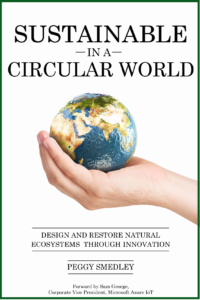The manufacturing industry is in a state of flux, as suppl-chain issues persist, causing sourcing bottlenecks and logistics backlogs. At the same time, we are seeing a rise in cost and cyberattacks and shortage of skilled workers. Looking ahead to 2023, Deloitte projections based on Oxford Economics’ Global Economic Model anticipate 2.5% growth in GDP in manufacturing. The solution is obvious—digital transformation—but the road is bumpy.
Part of the challenge is Industry 4.0 and Industry 5.0 mean different things to different people. Let’s break this down. I recently had the opportunity to sit down with Thorsten Wuest, associate professor, West Virginia University, and he has an interesting perspective on the difference between the two.
Industry 4.0 and Industry 5.0
At its core, Industry 4.0 merges IT (information technology) and OT (operational technology) in a cyber-physical system manner for mass customization and personalization with intelligence. In contrast, Industry 5.0 combines human perception and intelligence with efficiency, AI (artificial intelligence), and precision of machines in industrial production.
The big takeaway is this: Industry 5.0 is neither a replacement nor an alternative, but an evolution and a logical continuation of the existing Industry 4.0.
We see here that Industry 4.0 emphasizes technology-driven approaches, which promote the digitization and digitalization of new and existing manufacturing and production systems and networks. On the other hand, Industry 5.0 is value-oriented, focusing on the human-centric aspect of technologies. In fact, he goes on to say there are three leading characteristics of Industry 5.0 including human-centricity, sustainability, and resiliency.
The Drivers for Change
The reasons for this transformation are myriad. Deloitte suggests companies with higher digital implementation tend to have increased supply-chain visibility and are better able to adapt to supply-chain challenges. Additionally, continued investments in advanced manufacturing technologies can help develop the required agility that will be needed with the high level of uncertainty in today’s economic climate.
With all this in mind, Deloitte suggests manufacturers’ digital strategies in the next several months will be based on maintaining momentum—or investing in the right technologies to help manufacturers pivot quickly. It will also be based on being able to protect long-term profitability and broaden advanced manufacturing capabilities.
Deloitte indicates robotics and automation can enhance efficiency, whereas artificial intelligence and machine learning capabilities can provide the required edge. Increased automation is likely to drive productivity but also lead to changes in the workforce composition in the industry. For example, some manufacturers have accelerated warehouse automation in response to pandemic-related labor shortages.
Wuest adds one big driver for Industry 5.0 today is sustainability and societal needs. He says, “Remove some of the extreme enthusiasm for the pursuit of advanced technology adoption in Industry 4.0 and recall a kind of rationality on human-centricity. In the earlier definitions of smart manufacturing, human ingenuity was still at the core—this has slowly changed towards a more technical or technology centric definition. The enabling technologies will have to shift from being technology-driven to value-driven, reorganizing the enabling technologies toward a technological system that serves the well-being of people and society.”
Looking to the year ahead, we know manufacturers need to accelerate the adoption of emerging technologies. It is either disrupt or be disrupted in today’s labor-depleted market. Ultimately, digital transformation will help address workforce shortages, scale smart factory initiatives, heighten supply chain resiliency, and provide greater opportunities for sustainability. The sky is the limit, as I like to say, and technology will help us get there.
Want to tweet about this article? Use hashtags #IoT #sustainability #AI #5G #cloud #edge #futureofwork #digitaltransformation #green #ecosystem #environmental #circularworld


